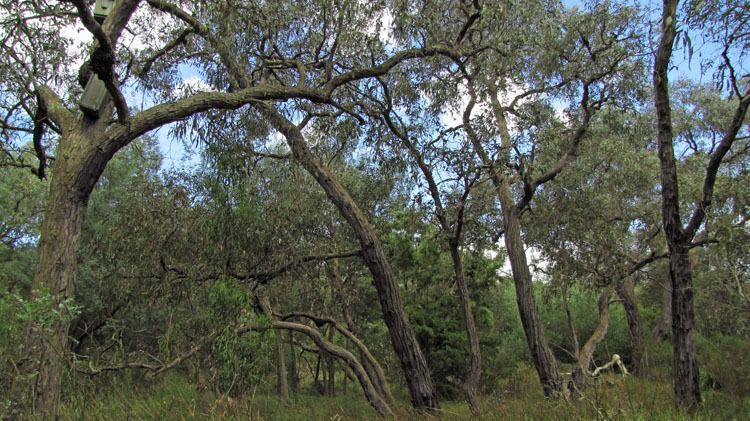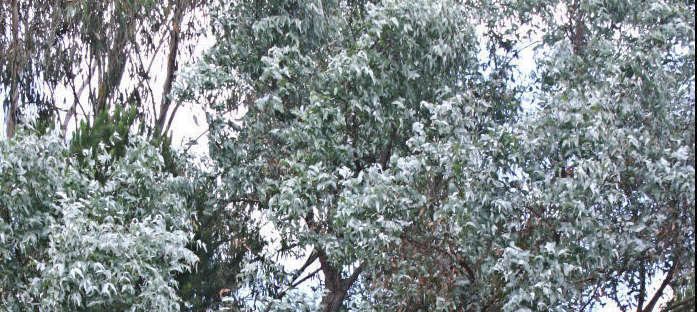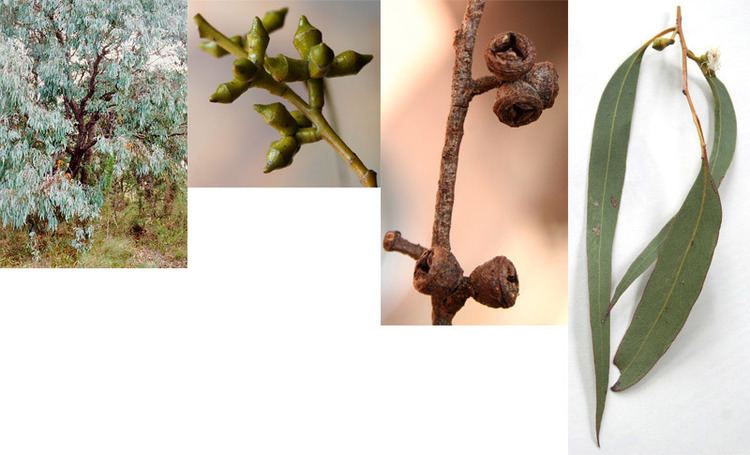Genus Eucalyptus Rank Species | ||
 | ||
Similar Eucalyptus angophoroides, Eucalyptus goniocalyx, Eucalyptus capitellata, Eucalyptus caliginosa, Eucalyptus bosistoana | ||
Eucalyptus cephalocarpa (silver-leaved stringybark, silver stringybark or mealy stingybark) is a small to medium-sized tree, native to and Victoria and New South Wales in Australia.
Contents

Description

The species grows to 15 metres in height and has thick, soft fibrous grey-brown, fissured bark, typical of the "peppermints", which is persistent over the whole tree, or nearly so.

The juvenile leaves are opposite, dull grey-green and sessile. The cream or white flowers are followed by conical or globose woody fruits which usually appear in groups of 3 or 7 and are almost sessile.
Taxonomy

The species was first formally described as a subspecies of Eucalyptus cinerea by botanist Joseph Maiden in A Critical Revision of the Genus Eucalyptus in 1914. It was promoted to species status by William Blakely in A Key to the Eucalypts in 1934.
Distribution

The species is common around Melbourne, from the eastern suburbs to the Dandenongs and south to the Mornington Peninsula. From Melbourne it extends eastwards through Gippsland, and just over the border into New South Wales.
